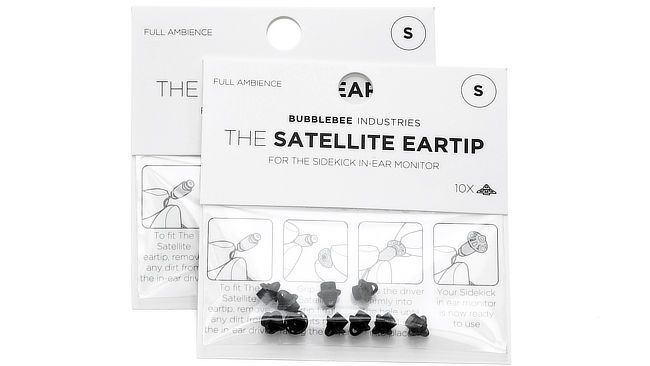
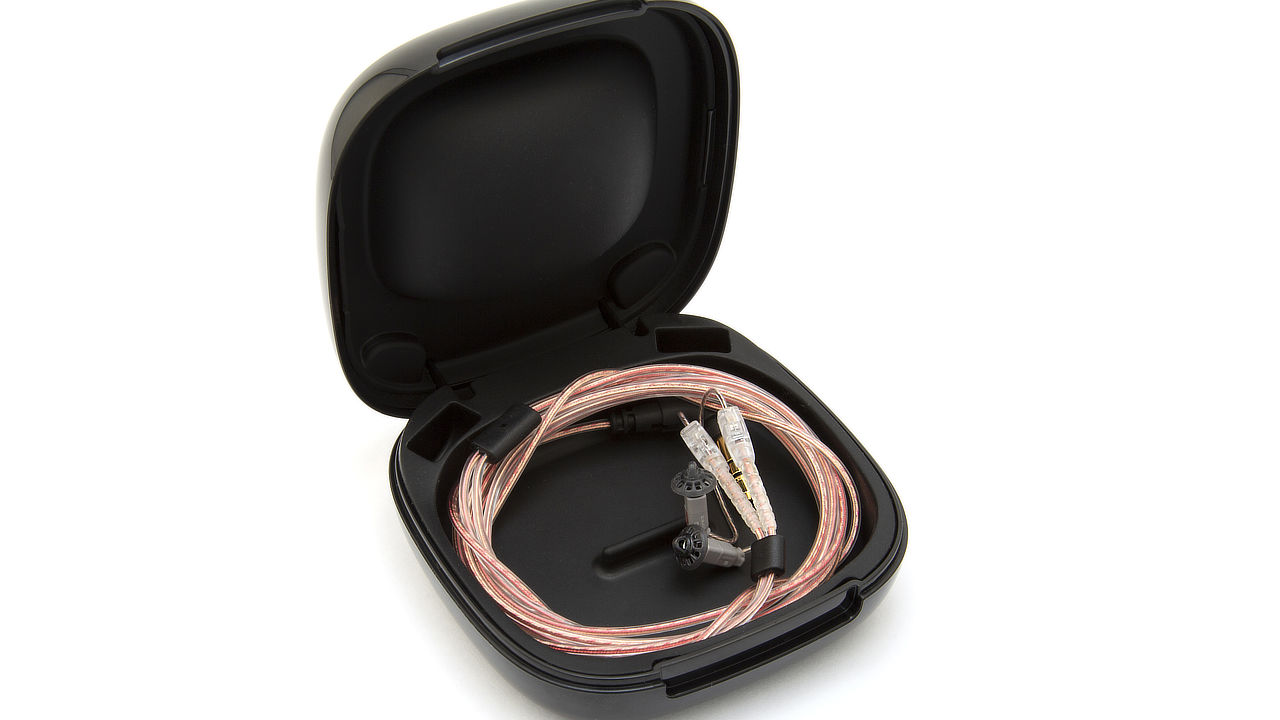
Review: We take a look at bubblebee's Sidekick In-Ear monitors, and find that they have a multitude of uses.
Bubblebee’s in-ear monitors, the Sidekick In-Ear Monitors, are Interruptible FoldBack (IFB) devices, which are essential parts in a monitoring and cueing system as it’s used in television, filmmaking, video production and radio broadcast. They allow for one-way communication from a director or assistant director to a performer who is on air or to a remote location.
Bubblebee’s Sidekicks are meant to be part of the intercom circuit used by a television producer or director and are, therefore, usually connected by a radio receiver. Lacking such a wireless transmitter, I tested the Sidekicks with an Apogee Element 24. I received the two different models, the Sidekick Mono and the Sidekick Stereo.
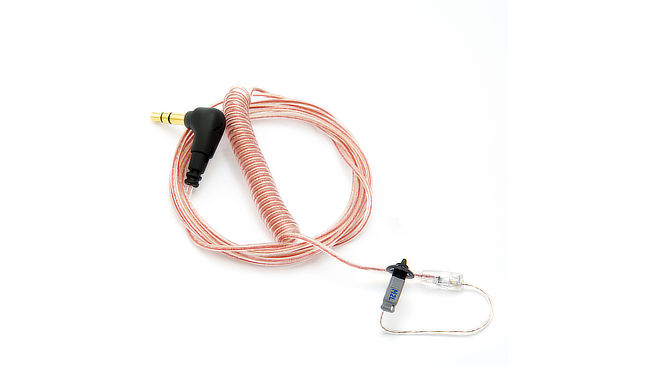
They all come in a nice, small plastic carry box with a tie clip, silicon ear tips with strange names that serve to either block ambient noise for about 90%, block some ambient (judging from my experience, I’d say up to half) and block no noise at all, meaning you are fully aware of your surroundings.
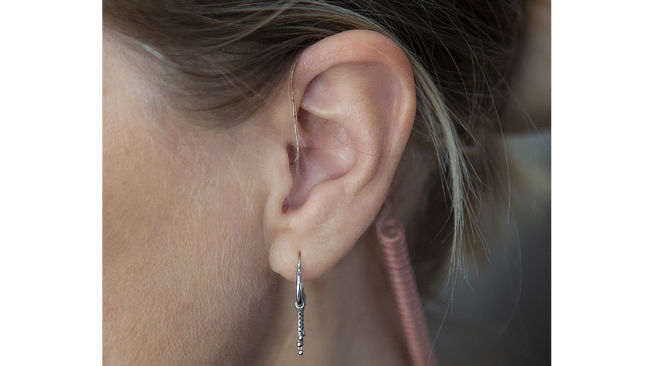
You also get extra tiny little things on a stick, called “filters”, to put on the outside of the drivers. The drivers themselves are smaller than the cotton end of a Q-tip and are suspended from a stiff but very thin wire. Nevertheless, it’s easy to put them in your ear canal, where they are supposed to sit for 20 hours or so without causing fatigue – obviously also depending on how loud you set your transmitter. I tried holding them in for six hours and even then I couldn’t feel them.
The stiff wire-driver combination can be taken apart from the equally thin flexible wire that has a mini-jack at the other end. This allows for a quick and inexpensive exchange of a broken monitor with a new one, for example.
The wire that you wear around the back of your neck can have a clear or light brown sheath. Both wires are reinforced with Kevlar so you don’t need to be very careful not to break anything and because they’re ultra-thin, the whole thing becomes rather invisible when you’re wearing it correctly.
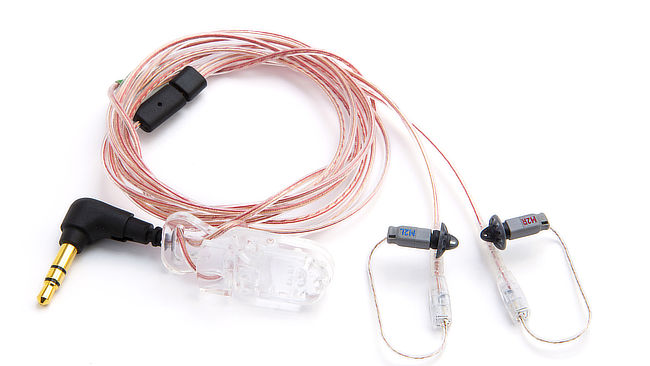
Both models have the same frequency response, with a curve that shows heavy focus on speech, i.e. a boost that starts at about 200Hz peaking at 3000Hz and then again but somewhat lower at 6000Hz. Beyond these two limits, the response declines, which means they’d sound thin if you’d use them to listen to music – but that’s not what these are intended to be used for, anyway.
Using them for voice monitoring – even without the IFB part of the equation – is quite a pleasure. They are really made for wearing for long periods of time, with a complete lack of “oomph”, but with everything within the range of the human voice clearly audible and intelligible, even in relatively noisy environments – and even with the no-blocking-noise silicon ear tips mounted.
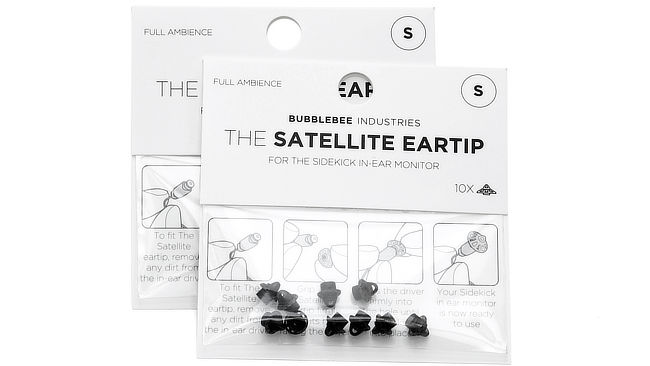
The Sidekick also has an unexpected benefit when you’re using it as a boom pole operator, for example. Boom pole operators usually wear headphones to monitor what they’re recording, but on the set, they need to communicate with the director – and often also with other people. I found out that the Sidekick In-Ear monitors are tiny enough to wear under the headphone pads so that a sound recordist can keep monitoring while simultaneously listening to instructions and communications between others.
The fact that the Sidekicks are optimised for spoken voice and sit quite deep in your ear canal makes it surprisingly easy to discern what’s being said over the IFB channel from the content that you’re recording.
The Bubblebee Sidekick In-Ear Monitor Mono retails for about €200. The Stereo model goes over the counter for about €300.
Tags: Audio


Comments